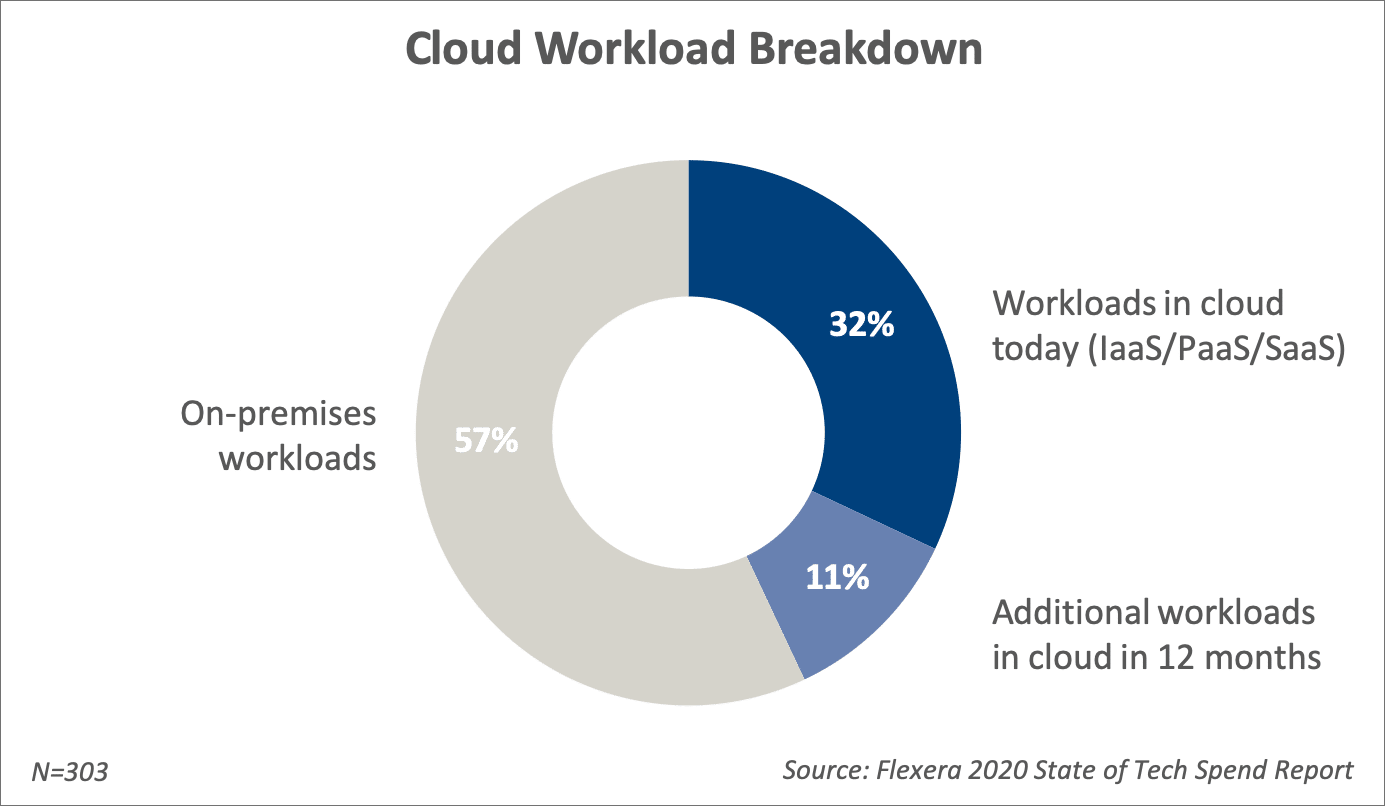Cloud migration also called “move to the cloud,” is the process of moving existing data processing tasks to a cloud platform, such as Amazon Web Services (AWS), Microsoft Azure, or Google Cloud Platform. Private clouds and hybrid cloud solutions can also serve as destinations.
Organizations move to the cloud because it’s a much easier place to start new experiments or projects; gain operational flexibility; cut costs; and take advantage of services available in the cloud, for instance, AI and machine learning.
Steps in cloud migration include selecting workloads to move, choosing a target cloud platform, choosing what services to use in the cloud, and estimating and assessing costs. See our blog post, Ten Steps to Cloud Migration, for details.
There are many ways to compare on-premises vs. cloud IT spending, but one such estimate, from Flexera, places on-premises workloads at just over two-thirds of spending, with cloud about one-third. Cloud is expected to gain a further 10% of the total in a 12-month period. So cloud migration is being pursued energetically and quickly, overall.

Many cloud migration efforts, however, underachieve or fail. In a recent webinar, Chris Santiago of Unravel Data spelled out three reasons for challenges:
- Poor planning
- Failure to optimize for the cloud
- Failure to achieve anticipated ROI
Unravel Data has support for cloud migration as a major feature, especially for big data workloads, including many versions of Hadoop, Spark, and Kafka, both on-premises and in the cloud. If you want to know more, you can create a free account.


